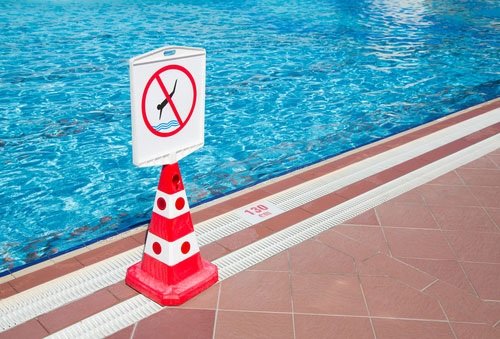A mother is looking for answers after her teenage son mysteriously died in a Los Angeles hotel swimming pool. Most likely, one of three things could have caused his death.
The young man from England was in town with his mother on a multi-city trip around the United States. According to first responders, Daniel Olatunji had been underwater for about seven minutes when he was pulled from the pool. They rushed him to a nearby hospital, but he was declared dead several hours later. His mother said that Daniel was in good overall health and also a strong swimmer. “It’s difficult to have closure without knowing exactly what happened,” she remarked.
When Daniel’s body arrives in London, authorities will probably perform an autopsy.

What Causes Swimming Pool Injuries?
Drowning is the leading cause of unintentional death in children between 1 and 4, and for every child that dies, five others are treated for serious injuries in hospital emergency rooms.
Brain asphyxia begins after just four or five minutes under the water. When oxygen runs low, in order to keep itself alive, the brain starts shutting down motor skills and other functions that a person can live without, such as speech, sight, or hearing. Core activities, like memory and other higher brain functions, are the next ones to go. Finally, the brain relinquishes control over the heart, lungs, and other vital organs, causing death.
Regardless of whether the incident happens at a backyard pool or at a hotel pool, the legal issues remain much the same, as outlined below.
As shocking as it may sound, swimming pool poisoning may actually cause more injuries than drowning.
- Too Many Chemicals: Most swimming pool cleaners contain a number of extremely toxic chemicals, such as bromine, chlorine, and various types of acids, that are possibly fatal if swallowed or inhaled. Many pools, especially high-use pools, are overcleaned.
- Too Few Chemicals: Undercleaned pools are a problem as well, because it is easy for bacteria to grow and spread in the reasonably warm water.
- Reactions: Some people have serious allergic reactions to certain substances. Moreover, the same chemicals that clean the water and kill bacteria can also burn eyes, ears, and other parts of the body.
Because of these dangers, there are strict requirements regarding swimming pool chemicals and overall pool cleanliness.
There is one other large category. In 2010, Rachelle Friedman made headlines as the “paralyzed bride” after someone gently pushed her into the shallow end of a swimming pool. The subsequent fall severed a vertebrae in her back, and she has not felt anything below her collarbone since then. In the vast majority of all such incidents, the pusher does not intend to harm the victim in any way whatsoever, but such unintentional harms is the essence of a negligence case.
Any of these three tragedies could have affected Daniel. Although he was a strong swimmer, even good swimmers unexpectedly get hurt. Or, he might have had a very bad reaction to a swimming pool chemical, causing incapacity. As this incident happened on New Year’s Eve, someone could have bumped into him or pushed him into the pool. There’s also the possibility that some combination of events led to his death.
Liability Issues
According to personal injury attorney Joshua Glotzer, “swimming pool owners have a duty of ordinary care to keep their pools safe. Many times, safety laws establish the standard of care in the same way that speed limit laws establish a reasonable speed.” Mr. Glotzer regularly handles negligence cases and more information can be found here https://www.socalpersonalinjurylawyer.com/
Most swimming pool fence requirements are in the Swimming Pool Safety Act. Its provisions mostly concern the prevention of accidental drownings. Some of these standards include:
- A tarp or other object that completely covers the pool when it is not in use and is strong enough to support a child that falls onto it,
- Alarms that go off if someone opens a door or window that has pool access or if someone touches the water,
- A fence that is at least 60 inches high and virtually unclimbable,
- Any other safety devices recommended by the American Society for Testing and Materials International or the American Society of Mechanical Engineers, and
- A self-latching gate with a mechanism located on the pool side that is at least 54 inches off the ground.
If the owner knew or should have known about an enclosure defect, and that defect caused the victim’s injury, the owner is liable for damages.
California also has standards for swimming pool water quality. Pool suction must meet certain standards; wave action pools must meet additional requirements. Chlorine residue must be no greater than 10ppm and no less than 1 or 2ppm (depending on whether the chlorine also contains cyanuric acid); bromine residue cannot be any higher than 2ppm. These chemical amounts keep the water clean without creating an unduly high injury risk.
Once again, any evidence of noncompliance with these standards is also evidence of negligence, assuming that the owner knew or should have known about the issue.
Finally, California landowners have a duty to prevent third parties from committing foreseeable crimes or otherwise injuring their guests via intentional torts. That same duty probably applies to unintentional torts, like bumping into someone and unintentionally pushing the person into the pool. Arguably, this duty only applies to waterparks, a host of a pool party, and other high-traffic situations.
